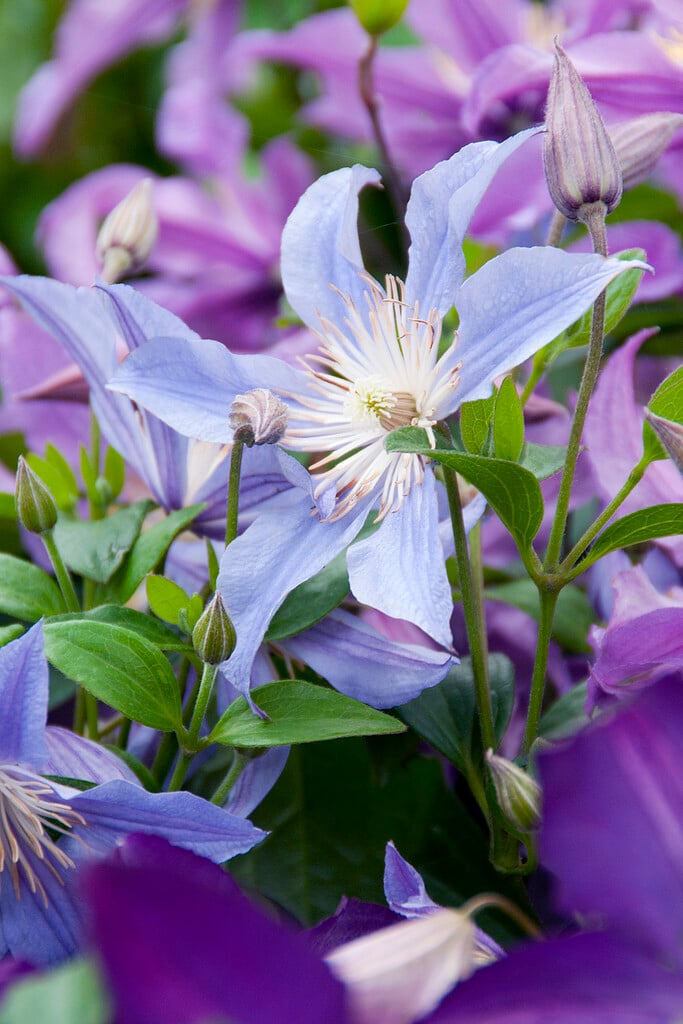Clematis Blue River ('Zoblueriver'PBR) (I)
clematis [Blue River]
Deciduous, clump-forming herbaceous (non-climbing) clematis to about 1-1.2m tall, with elliptical green leaves and stems topped by small, nodding, open, star-shaped purple flowers 6-8cm across, aging to violet-blue, but purple at the centre, with white stamens. Flowers from midsummer to early autumn, are followed by feathery, silvery seedheads
Size
Ultimate height
1–1.5 metresTime to ultimate height
2–5 yearsUltimate spread
1.5–2.5 metresGrowing conditions
Moisture
Moist but well–drained, Well–drainedpH
Acid, Alkaline, NeutralColour & scent
| Stem | Flower | Foliage | Fruit | |
| Spring | Green | |||
|---|---|---|---|---|
| Summer | Purple Blue | Green | ||
| Autumn | Purple Blue | Green | ||
| Winter |
Position
- Full sun
Aspect
South–facing or West–facing
Exposure
Sheltered Hardiness
H6Botanical details
- Family
- Ranunculaceae
- Native to GB / Ireland
- No
- Foliage
- Deciduous
- Habit
- Clump forming
- Potentially harmful
- Skin irritant. Wear gloves and other protective equipment when handling. Pets (rabbits): Harmful if eaten. For further information and contact numbers regarding pets, see the HTA guide to potentially harmful plants
- Genus
Clematis can be deciduous or evergreen shrubs or herbaceous perennials, mostly climbing by twining leaf-stalks, and often with showy flowers. Some have attractive fluffy seedheads in autumn
- Name status
Trade
- Horticultural Group
- Integrifolia Group clematis are woody-based subshrubs with non-climbing or semi-climbing herbaceous stems, and bell-shaped or flat flowers on the current year's growth, in summer and early autumn
How to grow
Cultivation
Plant herbaceous (non-climbing) clematis at soil level in moisture-retentive, well-drained soil in full sun, with the roots and base of the plant in shade. See clematis cultivation
Propagation
Propagate by division or take basal softwood cuttings of herbaceous clematis in spring
Suggested planting locations and garden types
- City and courtyard gardens
- Cottage and informal garden
- Cut flowers
- Flower borders and beds
- Underplanting of roses and shrubs
Pruning
Pests
May be susceptible to aphids, snails and caterpillars; petals may be eaten by earwigs
Diseases
May be susceptible to honey fungus (rarely), clematis wilt and clematis slime flux
Get involved
The Royal Horticultural Society is the UK’s leading gardening charity. We aim to enrich everyone’s life through plants, and make the UK a greener and more beautiful place.
